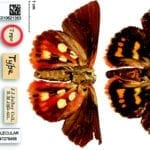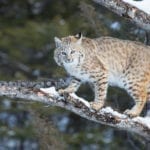Scientists learn about how animals live their lives based on what they eat. A selection of papers in the Canadian Journal of Zoology details the surprising tastes of predators.
Surprise #1: Harbor porpoises hunt in groups
“Shy but fascinating,” is how Sara Torres Ortiz, PhD student at the Max Planck Institute for Ornithology, describes harbour porpoises. The lives of these aquatic mammals are mysterious compared to their more famous relatives, dolphins. “Sometimes, when talking about our work, I need to just say: it is like a small dolphin,” Ortiz says via email.
To learn about porpoise behaviour, Ortiz, then a scientist at the University of Southern Denmark, invested in drones. On sunny, calm days, Ortiz and colleagues surveyed the shallow waters around Denmark’s Island of Funen, getting a bird’s eye view of porpoises as they went about their business. They analyzed nearly 44 hours of footage and found something surprising.
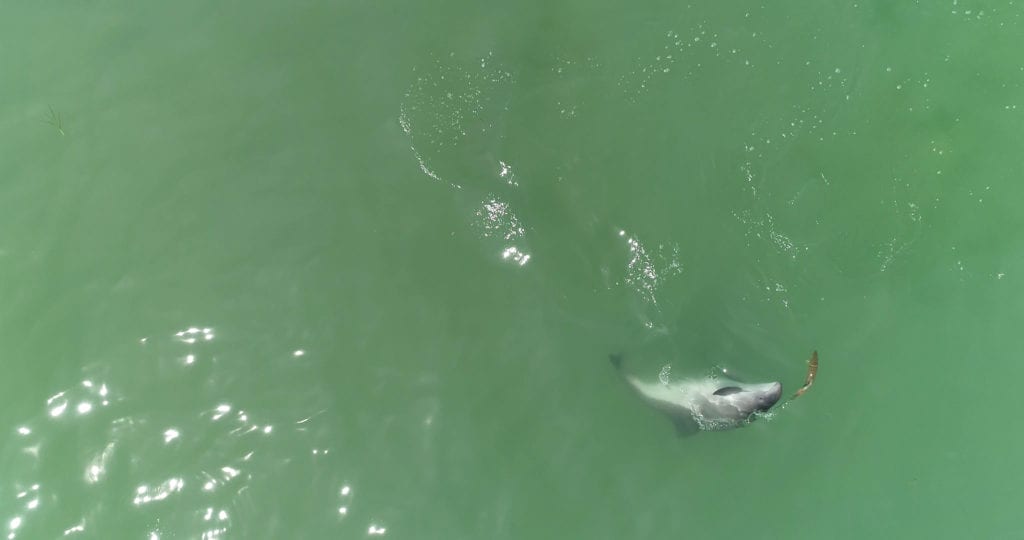
Harbour porpoise hunting | SDU, Sara Ortiz
Porpoises, which are typically thought of as solitary animals, frequently partner up. “Harbour porpoises were more often seen foraging in groups than solitary, and that these groups seemed to be organized, with individuals exhibiting role specialization when foraging on the same school of fish.”
Though harbour porpoises are abundant, Ortiz notes that understanding their behaviour could help us understand the needs of critically endangered species, like the vaquita.
Surprise #2: Fogo Island’s caribou are a popular meal for coyotes
Caribou were introduced to Newfoundland and Labrador’s Fogo Island in the 1960s. Coyotes are relatively new to Fogo Island, having crossed the sea ice from Cape Breton in the 1980s.
Interested in the extent of coyote predation on caribou, a group of scientists from Memorial University of Newfoundland combined observations of coyote scat with tracking data from GPS-collared caribou to model how often coyotes and caribou overlapped with each other.
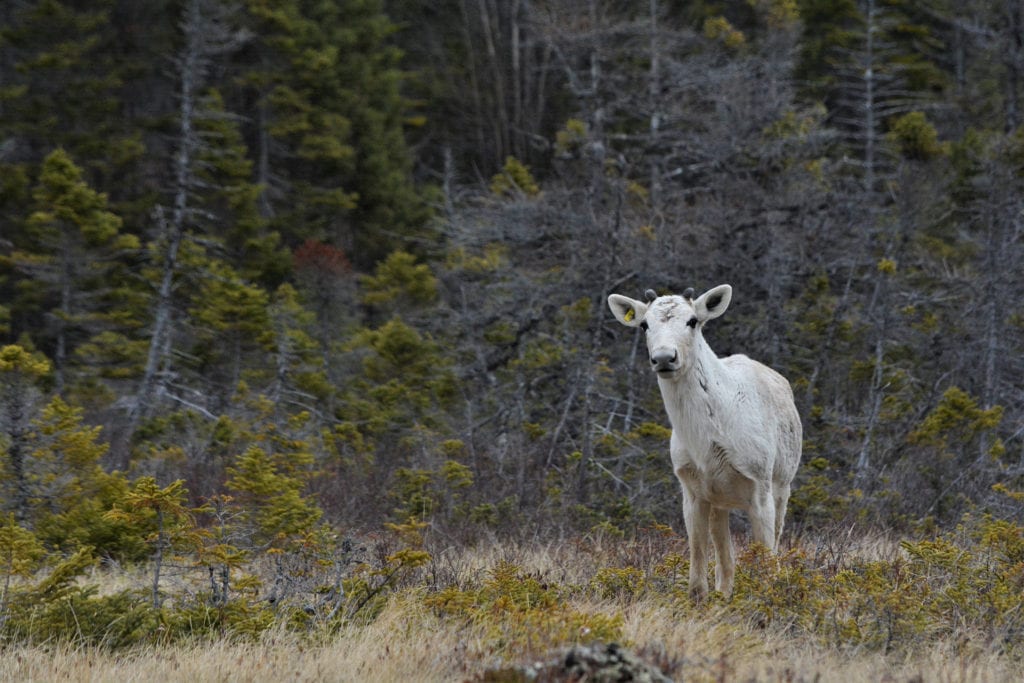
Caribou on Fogo Island | Juliana Balluffi Fry
“One of our most important findings was that coyotes relied on caribou as one of the main food sources: approximately 50% of coyote scat samples contained caribou [hair and bones],” said postdoctoral fellow Quinn Webber, graduate student Richard Huang, and associate professor Eric Vander Wal, in a joint email response.
This was far more than they’d expected. “We anticipated that caribou would be a secondary food item compared to other species, like snowshoe hare or small mammals.”
The team also found that coyotes tended to frequent habitats preferred by caribou, like lichen barrens, suggesting they actively sought out their prey.
Caribou are endangered in Canada, so there’s interest in monitoring and conserving the population. Though their role in the decline of caribou is not well-established, the authors noted “it is possible that coyotes could be an under-appreciated predator, or potential predator, of caribou and our findings support the idea that coyotes can, and will, prey on caribou if given the opportunity.”
Surprise #3: Gray seals eat way more flatfish than we thought
Thanks to the 1972 Marine Mammal Protection Act, gray seals in the United States have bounced back from near extinction. But with more seal mouths to feed comes more concern from fishers about their effect on the valuable fish stocks around Cape Cod.
As a graduate student at the University of New England, Michelle Dufault was interested in how the US gray seal diet changed over seasons and between individuals.
To find out what seals eat, traditionally scientists look through scat for small bones called otoliths. But this technique excludes some species like flatfishes that are not swallowed whole or sharks, which don’t have otoliths.
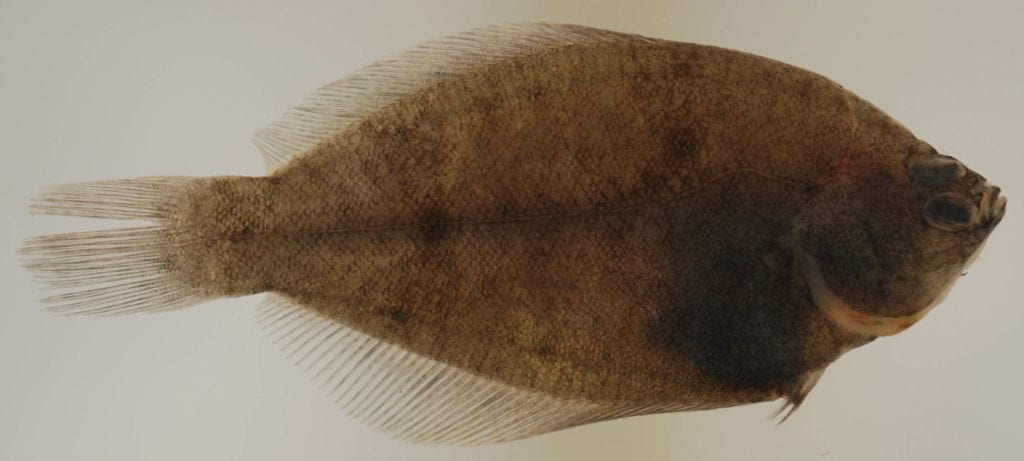
Winter flounder | Robert Aguilar, Smithsonian Environmental Research Center
Molecular scatology is a more modern technique where scientists use DNA extracted from animal poop to “determine sex, species, or individuality of a scat or determine the prey contents in scat,” Dufault clarified in email.
Using molecular scatology, Dufault and colleagues found that seals were eating flatfish 5 times more often than expected. The scientists only counted 14 scat samples with otoliths but found flatfish DNA in 73 scat samples. The findings are “an important reminder that we aren’t the only ones fishing,” Dufault noted, adding “we need good science on predator diet so that fisheries management decisions can be well-informed and commercial/recreational fishing is done sustainably.”
Surprise #4: Toxic newts are not plat du jour for toxin-resistant snakes
It started with a lab meeting, where as a postdoc Andrew Durso (now an assistant professor at Florida Gulf Coast University) learned that even though some garter snakes are incredibly resistant to newt toxins, they don’t seem to eat them very often.
“Some populations [of] newts are toxic enough to kill 50 adult humans, but garter snakes can still eat them with minimal consequences,” noted Andrew Durso via email. “We wanted to know how often garter snakes actually eat newts.”
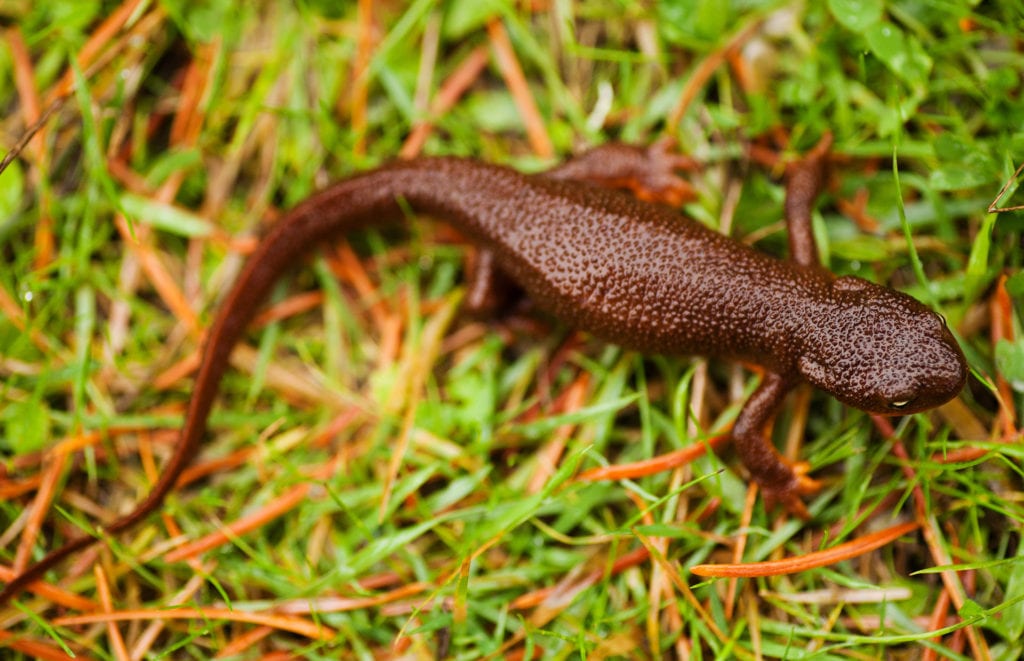
Tetrodotoxin is a neurotoxin present in the skin of rough-skinned newts.
Easier said than done. Snakes don’t eat very often, so its hard to find enough snake scat to work with. But snakes are what they eat—their bodies are made of the same carbon and nitrogen isotopes as their prey. The team turned to stable isotope food web analysis.
“The basic premise of a stable isotope food web study is that you can take tissue samples from prey and predators and compare [the isotopes] to see what the predators are using to build their bodies out of,” Durso explains.
The researchers caught as many snake-sized snacks—newts, mice, earthworms, frogs, slugs—as they could find in the E. E. Wilson Wildlife Area, Oregon, and compared their isotopes to their snakes.
“The key finding is that newts make up only about 3% of the diet of garter snakes at this site, despite the two species being partners in a co-evolutionary arms race. Garter snakes seem to feed mostly on other (probably non-toxic) salamanders, chorus frogs, slugs, and small mammals.”
Durso also emphasizes how the snake–newt predator–prey relationship is an interesting evolutionary case study.
“You don’t have to enter into an exclusive two-way relationship with another species, like specializing on a prey species, in order for it to have strong effects on your evolution.”


